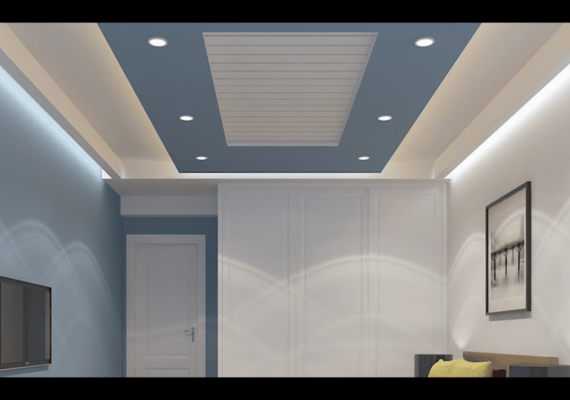What Is A Gypsum Board? What Is Gypsum Board Used For?
What Is A Gypsum Board?
Gypsum board, also known as drywall or wallboard, is used to construct interior walls and ceilings. It typically comes in different thicknesses varying from one-quarter inch for decorative purposes to three-quarters of an inch for acoustic sound control or insulation.
Generally, the core of the gypsum board consists of gypsum plaster sandwiched between two layers of heavy paper on either side.
When installed, it is usually attached to metal support channels, commonly referred to as furring strips, along with appropriate screws and joint compounds for finishing the seams between boards.
Gypsum board provides excellent fire resistance and thermal insulation, making it an ideal choice for all types of construction projects where these qualities are desired.
What Is Gypsum Board Used For?
Gypsum board is widely used to build interior walls, ceilings, and dividers as it is highly fire-resistant. Due to its economical properties, it is the most common wall material in residential, institutional, and commercial buildings.
Gypsum board provides sound control by absorbing sound waves, making it ideal for use in classrooms, rehearsal halls, and recording studios. Despite being lightweight, its durability gives it great strength that can hold objects ranging from picture frames to large flat-screen televisions without buckling or splitting.
💥🎁 Christmas & Year-End Deals On Amazon !
Don't miss out on the best discounts and top-rated products available right now!
🛒 Shop Now and Save Big Today!*As an Amazon Associate, I earn from qualifying purchases.
Additionally, gypsum board can be easily cut into different shapes or sizes, so it fits snugly around columns and other architectural features like arches or windows.
The fact that gypsum boards can be quickly installed further adds to its popularity among builders as job completion times are significantly reduced compared to traditional building materials such as brick and mortar.
What Is The Price Of Gypsum Board In Kenya?
The prices of gypsum boards in Kenya vary depending on the brand and thickness.
Gyproc gypsum board (12mm thick) costs Ksh 1900, Knauf gypsum board (9.5mm thick) is priced at Ksh 1050, while Knauf gypsum board (12.5 mm thick) comes at the cost of Ksh 1500, with Hada gypsum board (9mm thick) being the cheapest option at Ksh 780.
Shopping around for different suppliers before purchasing is always advisable to get the best value for your money.
What Is The Difference Between Gypsum And Gyproc?
Gypsum and Gyproc are both plaster-based building materials used for creating a smooth finish on interior walls and ceilings. The primary difference between them is the manufacturing process. Gypsum is a naturally occurring mineral.
💥🎁 Christmas & Year-End Deals On Amazon !
Don't miss out on the best discounts and top-rated products available right now!
🛒 Shop Now and Save Big Today!*As an Amazon Associate, I earn from qualifying purchases.
Gyproc is an industrial product created by mixing gypsum with various additives such as glass fiber or cellulose fibers, making it stronger and more durable than regular gypsum. Both materials have excellent fire resistance properties and are easy to install but require special tools and techniques for proper installation.
There may also be additional labor costs associated with using one material over the other due to training requirements or additional skill sets required when working with the different types of boards.
Is Gyproc Gypsum Board Good?
Yes. Gyproc Gypsum Boards are ideal for creating highly safe and comfortable internal environments due to their excellent resistance to fire, sound, thermal, moisture, and impact.
They provide a versatile interior lining solution that can be used in various construction projects – from residential to industrial and commercial applications.
Given their high-performance levels and excellent longevity, Gyproc Gypsum Boards make an ideal choice when considering internal wall lining solutions.
Is Gyproc Waterproof?
Yes. Gyproc Moisture Resistant plasterboard is a special drywall that features water-repellent additives encased in a green liner paper. This makes it suitable for intermittent moisture applications, providing excellent protection against water damage and moisture-related problems.
💥🎁 Christmas & Year-End Deals On Amazon !
Don't miss out on the best discounts and top-rated products available right now!
🛒 Shop Now and Save Big Today!*As an Amazon Associate, I earn from qualifying purchases.
Although not completely waterproof, Gyproc Moisture Resistant can still offer superior performance compared to other drywalls and plasters when faced with the challenges of dampness. It also offers enhanced strength, stability, and fire rating compared to conventional drywalls.
